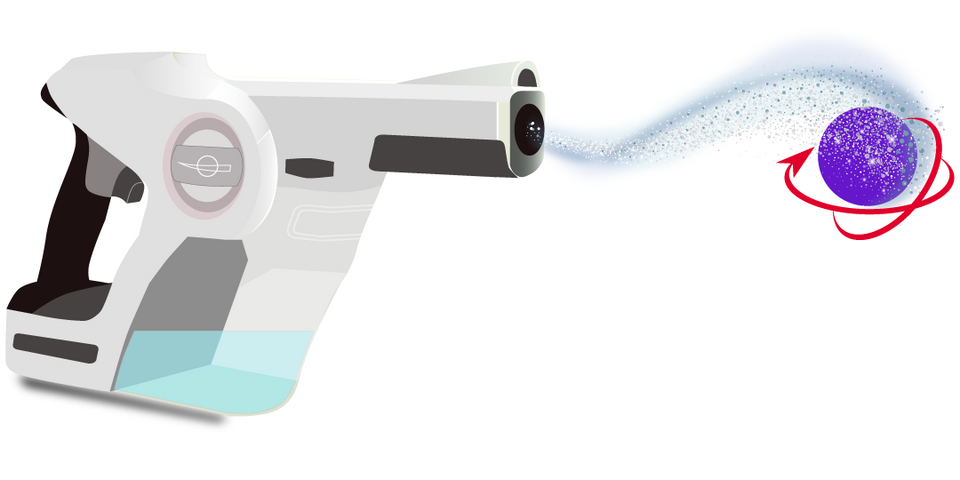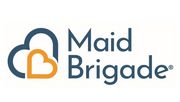
Cleaning and Disinfecting for Coronavirus
Many of us are staying home to remove ourselves and our loved ones from harm’s way and/or to at least slow the spread of this deadly virus. Novel coronavirus and COVID-19 is a new threat and we are all uncertain on the proper precautions at this time. We, here at Maid Brigade, have excellent standards of cleaning and we are thorough in our process, but in this article we hope to give you some instruction on what you can do to ensure as safe and healthy a home as possible.
We encourage you to be vigilant in this fight against the virus. We would discourage you from trying to kill every bit of bacteria in your home. We want a certain amount of bacterial microbe around us. It actually keeps us healthier. These are our recommendations if you feel that you have an exposure or have active illness in your home.
The good news is that the novel coronavirus is much like other members of the coronavirus family and those are susceptible to most good disinfecting products.
First, always read the label on your disinfectant. Almost always, it states to clean the surface first. It is best to do first the cleaning and then return to treat the surface with a disinfectant. The CDC’s website explains it as;
∙ Cleaning refers to the removal of germs, dirt, and impurities from surfaces. Cleaning does not kill germs, but by removing them, it lowers their numbers and the risk of spreading infection.
∙ Disinfecting refers to using chemicals to kill germs on surfaces. This process does not necessarily clean dirty surfaces or remove germs, but by killing germs on a surface after cleaning, it can further lower the risk of spreading infection.
The CDC says to always “wear disposable gloves when cleaning and disinfecting surfaces. Gloves should be discarded after each cleaning. If reusable gloves are used, those gloves should be dedicated for cleaning and disinfection of surfaces for COVID-19 and should not be used for other purposes. Consult the manufacturer’s instructions for cleaning and disinfection products used. Clean your hands immediately after gloves are removed.”
Always start with soap and water. It’s not fancy, but soap and water work. It works in two ways. First, the soap strips the outer coating from the coronavirus exterior envelope which will then cause it to begin to degrade. Secondly, the soap attaches itself to particles and to water. It is both hydrophobic and hydrophilic so it removes the viral particles that have attached themselves to surfaces including hands, light switch places, or countertops and then suspends them in the water. When you flush the water way, they leave too. This is why it is important to change your water frequently and to use running water when washing your hands.
Dish detergent in a sink or bucket of clean, warm to hot water is a great way to start the process. If your purpose is to prevention infection, then we recommend that once a day to do a good cleaning of all counters, stove top, microwave, refrigerator handles and door, and then all the high touch areas such as faucet handles, door knobs, stair railings, light switch plates, etc. Anything you touch often. Go through your whole home, do not stop at the kitchen area. Return to your starting point and then wipe down your surfaces with your disinfectant cleaner. If you have active illness in the home, we recommend doing this process several times a day. Make a full list for your home so you don’t forget a room or a high touch point. Don’t forget things we handle a lot such as remotes and cell phones.
For a preliminary list of currently accepted cleaners that meet the EPA’s guidelines: https://www.americanchemistry.com/Novel-Coronavirus-Fighting-Products-List.pdf.
Before we begin, let’s address an extremely important factor; dwell time. Dwell time is the time necessary for the disinfectant to disinfect. This time varies depending on the solution being used. Typically, the dwell time is 4-10 minutes. This means that the surface should remain damp for that amount of time. Your disinfecting product will indicate its appropriate time. Read those labels!
The chances are good that you have EPA acceptable disinfecting products in your home already. For example, chlorine bleach is an acceptable disinfectant. BE CAUTIOUS! We normally would not recommend it’s use but we know that today, more people than ever are turning to this powerful disinfectant.
Bleach solution
- “Bleach is very effective at killing the coronavirus, as well as virtually every other germ on the face of the planet,” says Dr. Paul Pottinger, a professor of infectious diseases at the University of Washington Medical Center.
- Always dilute household chlorine bleach. NEVER MIX BLEACH WITH ANYTHING EXCEPT WATER and remember, NEVER use bleach at full strength.
- Always wear gloves when using bleach.
- Do NOT use this around someone with breathing problems.
- Use in a well ventilated area.
- From the CDC: Diluted household bleach solutions can be used if appropriate for the surface. Follow manufacturer’s instructions for application and proper ventilation. Check to ensure the product is not past its expiration date. Never mix household bleach with ammonia or any other cleanser. Unexpired household bleach will be effective against coronaviruses when properly diluted.
∙ Prepare a bleach solution by mixing:
o 5 tablespoons (1/3rd cup) bleach per gallon of water or
o 4 teaspoons bleach per quart of water
- Bleach will remove color on many surfaces such as clothing, carpet, paint, and much more so it is NOT safe for all surfaces. Test an area before applying the solution.
Hydrogen peroxide
- Hydrogen peroxide is not as strong as bleach, so it’s less likely to cause damage, but it can remove color on fabrics.
- Don’t dilute it, use it straight.
- Hydrogen peroxide decomposes into water and oxygen. This happens rapidly when exposed to sunlight which is why it is sold in the dark brown bottles. Keep it in the manufacturer’s container.
Rubbing Alcohol
- Rubbing alcohol must be at least 70 percent alcohol to kill the coronavirus. Alcoholic beverages, such as vodka, are not a high enough alcohol content to disinfect.
- This has less harmful effects than hydrogen peroxide or bleach. When using rubbing alcohol, don’t dilute it.
- Rubbing alcohol is safe for most surfaces, but it can affect some plastics.
Laundry – from the CDC:
Clothing, towels, linens and other items that go in the laundry
- Wear disposable gloves when handling dirty laundry from an ill person and then discard after each use. If using reusable gloves, those gloves should be dedicated for cleaning and disinfection of surfaces for COVID-19 and should not be used for other household purposes. Clean your hands immediately after gloves are removed.
- If no gloves are used when handling dirty laundry, be sure to wash hands afterwards.
- If possible, do not shake dirty laundry. This will minimize the possibility of dispersing virus through the air.
- Launder items as appropriate in accordance with the manufacturer’s instructions. If possible, launder items using the warmest appropriate water setting for the items and dry items completely. Dirty laundry from an ill person can be washed with other people’s items.
- Clean and disinfect clothes hampers according to guidance above for surfaces. If possible, consider placing a bag liner that is either disposable (can be thrown away) or can be laundered.
All of our best to you during this stressful time. Please call on us if you have questions or concerns
Rachel Epperly
Owner│Maid Brigade of Rockville
9318 Gaither Rd, Suite 260 │ Gaithersburg, MD 20877
301-424-6243
About the Business
Have a question? Ask the experts!
Send your question

